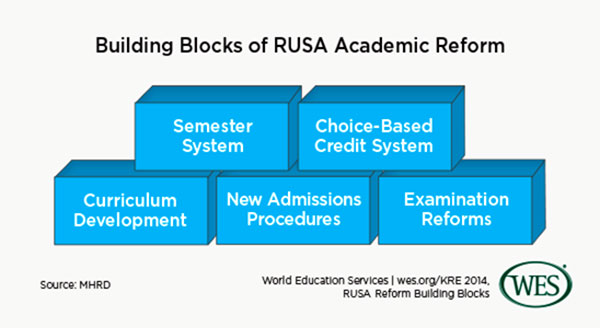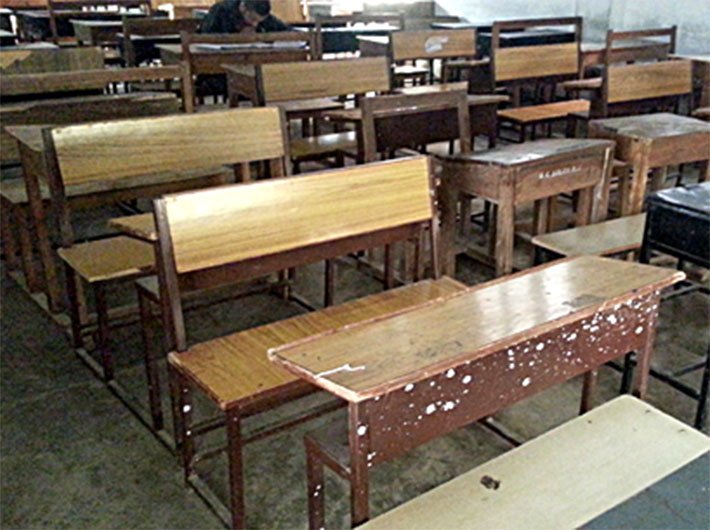We urgently require a comprehensive strategy that provides favourable results so as the country enjoy its demographic dividend
In his Madison Square Speech in September 2014, our prime minister had reminded the world about India’s advantage of demographic dividend. This has become an important data point to show the world that Indian population is not a problem now. World is of course looking towards us from the perspective of huge demand/investment potential but every other Indian statesman is still hyping on young work-force argument even when the roadmap to harness this energy for economy’s strength and nation building is not very clear. We are in an urgent need to formulate a comprehensive strategy that provides favourable results in next 25 years as India is expected to enjoy its demographic dividend only until 2040.
Gross Enrolment Ratio (GER) in India is 92% at primary level, 52% at secondary level and about 20% at higher education level. Low GER in higher education directly affects the effective contribution of work-force in all spheres involving specializations for innovations, research and design and leaderships at various levels. It is being increasingly realised all over the world that economic well being and productive efficiencies can be realised with higher intellectual and professional capabilities of human beings. Developed countries worldwide possess higher GER in higher education. GER in USA, UK, Japan and China are 34%, 59%, 55% and 28% respectively.
India spends only 3.3% of its GDP on education and the primary focus on enhancing enrolments at primary levels are ignoring the qualitative issues in higher education that gets a paltry share. Presently, out of the total enrolled students in higher education, 12.24% students are in university departments and 87.76% are in affiliated colleges. With an already low GER, 87.76% students with affiliated colleges, the proportion of students with general degree colleges (excluding professional technical colleges), comprise the maximum proportion. It is necessary to mention here that these affiliated degree colleges all across the nation are mostly focusing on higher enrolments hence the qualitative issue is almost missing due to the infrastructural bottlenecks.
As far as the employability of students passing out from these colleges is concerned, the studies by industry present a gloomy picture. The financial and faculty constraints have worsened the situation over the years. States are more concerned with elementary education; therefore, the allocation for higher education is mainly restricted to establishment cost. In most cases, the recruitments are contractual or periodic at a consolidated fixed salary. The hefty salary packages as implemented on the recommendation of previous pay commission failed to meet its primary objective to attract merit in teaching profession as the engagements all over the country are being done on contractual basis with less allowances and service benefits.
Keeping in view some of the issue, the central government, in 2013, launched a centrally sponsored scheme (CSS) i.e., Rashtriya Uchchatar Shiksha Abhiyan (RUSA) to reform the higher education system. It aims at providing strategic funding to eligible higher educational institutions.
The central funding is in the ratio of 65:35 for general category States and 90:10 for special category states. RUSA is going to be spread over the 12th and 13th plan periods with the objectives for improving the quality in the state higher education system. The government has set a goal of increasing the GER in college level to 30 percent by 2020, from a current rate of just under 20 percent.
RUSA Tower and Ground Zero
RUSA was envisaged as a panacea for all problems in higher education and therefore, justified in a very effective manner as if it will bring a complete transformation in the system. However, the ground zero all across the country represents an anti-thesis of the envisaged plan due to the complete ignorance of infrastructural constraints and hasty implementation without involving the stakeholders.
The states already reeling under financial constraints and increased obligations to provide better access to higher education were over enthusiastic in adopting the RUSA conditions for this CSS funding. Therefore, it hastily implemented the scheme with new ambitious model of choice based credit system. The over emphasis on internal and external examinations and evaluation that too in six monthly semester system has cut short the teaching days and extra-curricular activities.

This situation is even worse in the regions with extreme harsh weather and generally tough geographic conditions. The important stakeholders i.e., students, parents, teachers were not consulted while adopting the totally changed system which is not only complicated and difficult to understand for the institutions but for the parents and their wards too.
The twin objectives of RUSA seems self contradictory as the increasing GER with the left out students cannot address the quality issue well. This is more difficult when overambitious syllabi with numerous major, minor, compulsory (skill, language and social science based courses) and hobby courses have been catered to the students who enter colleges under TINA (there is no alternative) factor. The heavy courses require too much classrooms and teachers available in the institute if the adopted system really a choice based.
Implementations of major building blocks of RUSA, especially the choice based credit system (CBCS), semester system, comprehensive continuous assessment, have disturbed the established system. Universities, especially those with the states, are also struggling with teaching faculty and administrative staff crunch to cater to the needs of ever increasing number of affiliated colleges. Therefore, the curriculum development, admission and examination processes are not being carried so efficiently as envisaged.
Overstretched examination schedule, evaluation process and admission procedures are giving a tough time to teachers and students. As the economic and educational background of parents of students enrolled in degree colleges are not that good, the complicated processes for admission and exam procedures along with the increased expenditure obligations through cyber cafes defeat the very purpose of inclusive education. In remote areas electricity and net connectivity is also a serious issue.
The system as adopted from foreign environments required teacher-student ratio at minimum and infrastructure at plenty to cater CBCS and comprehensive continuous assessment. Enormous subject combinations require too many rooms and teachers so as to adjust time table within the convenient time period for students commuting from far-off places. RUSA that talked about teacher-student ratio at 1:20 was not followed at any level. Therefore, the ground reality has gone from bad to worse in the changed system. Lack of central heating systems and air conditioners in our colleges can’t enhance working hours/days when compared with the developed west from where this system has been copied.
The issues of overcrowded colleges running beyond the carrying capacity with degenerated infrastructure were not addressed before implementing RUSA. While running all the six semesters of three year degree courses simultaneously, the number of days required for conducting internal exams in each semester will require about 21 working days (exams-14 days, evaluation-10 working days), admission and examination procedures also require about 10 days in every semester.
Final university examinations can only be adjusted in at least 40 working days’ schedule due to numerous course numbers and examination-centre specific constraints. Evaluation of scripts will require about 10 working days even if we have a very efficient system in place for establishing spot evaluation centres. Colleges and universities being the vacation departments (due to unavoidable break to students between exam and result declaration), teachers are provided less earned leaves and no medical leaves as against the counterparts in other departments.
Therefore, teachers are allowed 65 days as annual vacation by the UGC. In a six monthly semester system, 32 days are deducted for vacations; 22 days are Sundays and approximately 10 gazetted holidays on an average. Out of total 182 days in six month semester, the above mentioned break up consume 148 days and leave only 34 days available for the teaching. As the Major and Minor courses only require 4 credits per week therefore, 12 more days are to be deducted from the available teaching days, leaving only 22 days available for teaching in each semester.
Teachers, who are expected to conduct seminars, carry out research work and prepare students for all extra-curricular activities are somehow confused under such an environment especially when UGC recommended API and PBAS is already in place. Teachers world over are expected to read and write continuously so that their intellectual growth can immensely benefit the students. If non-teaching activities surpass the main work of teaching, the passion of dedicated teachers in the profession for teaching activity will surely feel a de-motivating effect.
The Way Forward
Ministry of human resource development (MHRD), University Grants Commission (UGC), state higher education departments and affiliating universities must have a comprehensive analysis before switching over to all the components of RUSA. A step by step approach can be adopted in a phased manner with the clear cut roadmap for every state with due considerations to state specific problems in implementation. The stakeholders’ workshops in different regions are essential to capture practical solutions. The carrying capacity of all institutions must be worked out in accordance with the number of courses offered and students enrolled in different disciplines. Teacher-student ratio is also needed to be lowered so as to adopt a system that requires continuous assessment and constant teacher student interaction inside class and outside the class. The age old technology of chalk and talk needs to be replaced with the modern Smart Classes so that the efficiency of teachers is effectively enhanced with the audio-visual modern teaching aids.
Workstation to each faculty member is the need of hour so that everyone utilizes time for reading, writing and carrying out other job obligations. Common Staff Rooms are not different than the railway waiting rooms which are appropriate for gossips only. Therefore, at the moment, all serious works like assignment checking, paper setting, assessment work, lecture/notes preparation etc. are being carried by the teachers from their homes.
The current strategy to harness demographic dividend through the National Skill Development Agency and similar state agencies are going to focus mainly the vocational institutions and thereby, leaving the general degree colleges to fend themselves. Ever increasing degree colleges that still enrol more than two third of the GER in higher education, need an urgent attention and effective strategy so that the demographic dividend is harnessed in a big way.

